
HOME / Departments / Earth and Planetary Sciences / Paleoenvironmental Science
Paleoenvironmental Science
-
- OKAZAKI Yusuke, Professor
- We study the Earth’s climate and environmental changes in the past during the glacial-interglacial cycles for the past 800 kyrs based on paleo-proxies preserved in marine sediments. To obtain marine sediment samples, we participate in the research cruises. Microfossil assemblages and geochemical data provide clues to decode past climate changes. We mainly focus on the following topics: (1) changes in the ocean circulation of the glacial-deglacial North Pacific; (2) abrupt climate changes during the past warm interglacials.
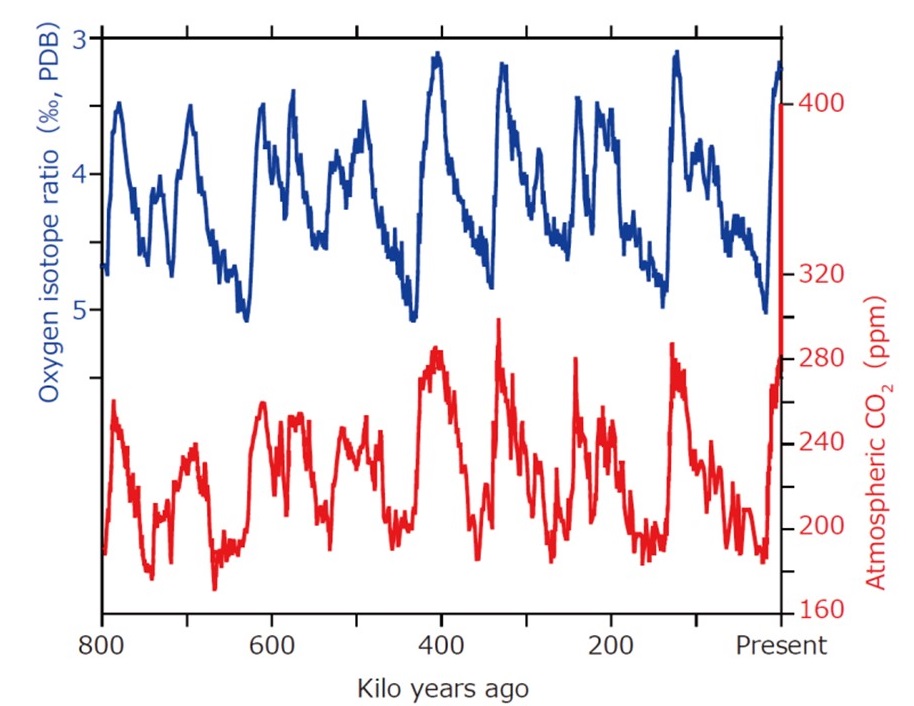
Earth's climate for the past 800 kyrs is characterized by a glacial-interglacial cycle with 100 kyr cyclicity co-varied with atmospheric CO2 concentration (Fig. 1). The present CO2 level (~420 ppm) far exceeds the glacial-interglacial range (~170 to 280 ppm). Understanding past atmospheric CO2 change mechanisms is the key to clarifying the Earth's climate system. As a giant carbon reservoir, the deep ocean plays a critical role in the global carbon cycle.
Marine sediments record environmental changes in the past (paleo archives, Fig. 2). Microfossils with biogenic opal (diatoms and radiolarians) and calcium carbonate (foraminifera and coccoliths) are preserved in sediments (Fig. 3). Microfossil assemblages and their geochemical parameters provide clues to reconstruct paleo-environmental changes (paleo proxies).
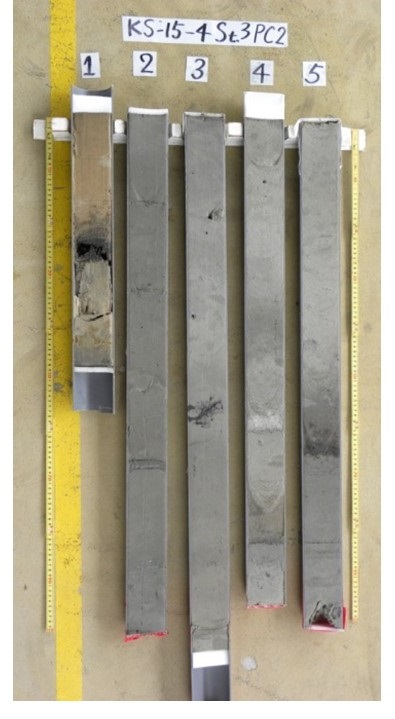
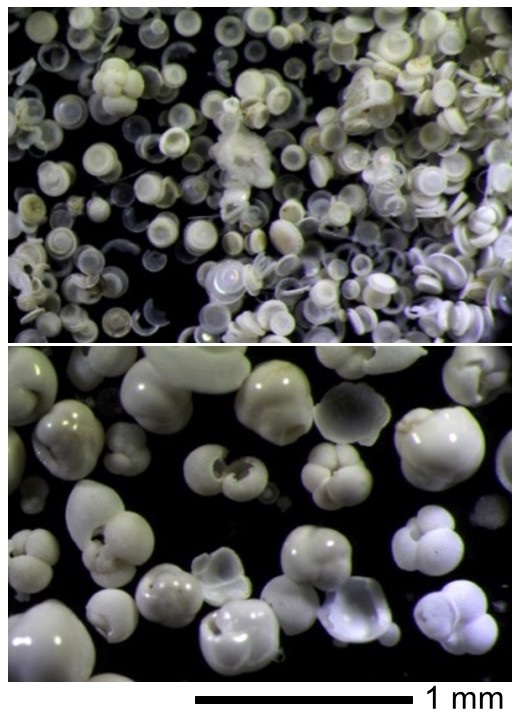
Topic 1. Multi-proxy records in a sediment core from the Okhotsk Sea since the last glacial period (Fig. 4). Combined geochemical and microfossil records have revealed pronounced deglacial events with high diatom productivity and sea-ice retreat (Okazaki et al., 2014; Nakamura et al., 2020).
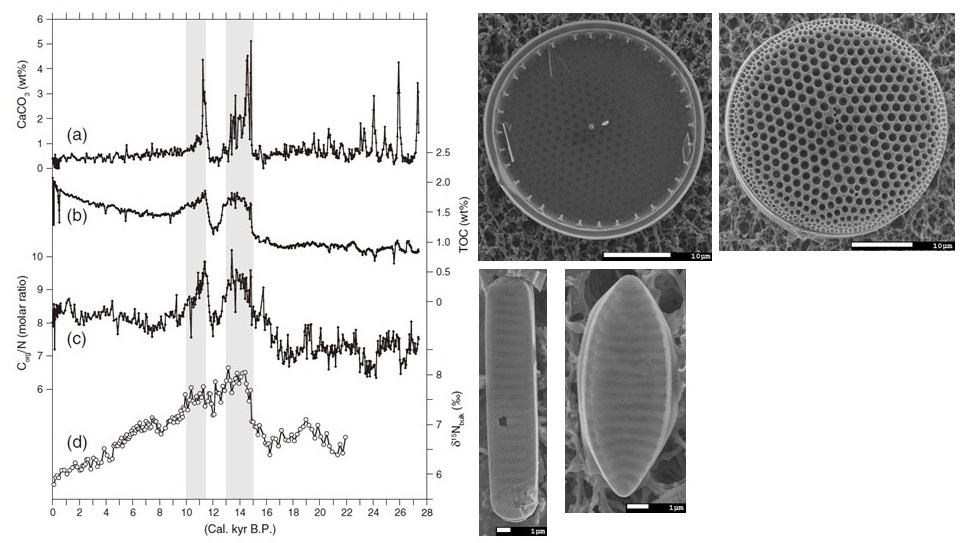
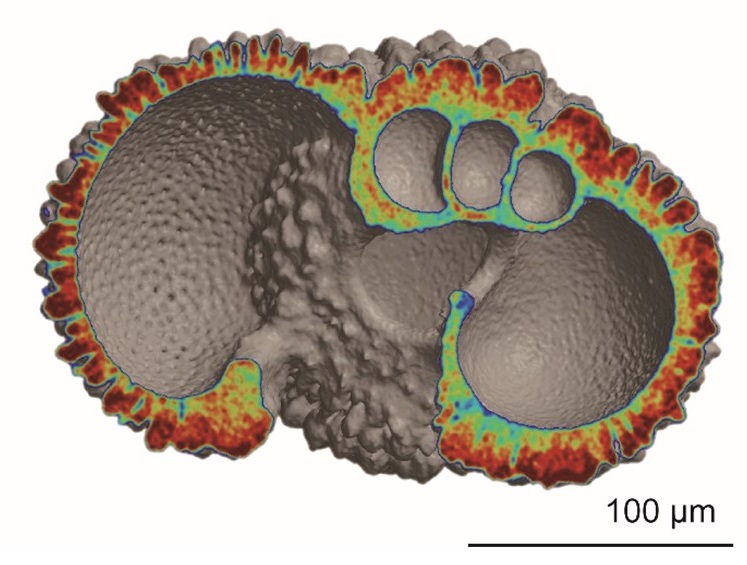
Topic 2. We try to develop novel paleo-proxy development to reconstruct past environmental change. Figure 5 is a CT cross-section image of a planktic foraminiferal shell. The color indicates the CaCO3 shell density, which reduces by ocean acidification. This method allows us to quantitatively estimate the carbonate dissolution of the foraminiferal shell (Iwasaki et al., 2015).
References:
Iwasaki, S., et al., Observation of the dissolution process of Globigerina bulloides shells (planktic foraminifera) by X-ray micro-computed tomography, Paleoceanography 30, 317–331, 2015.
Nakamura, H., et al., An assessment of diatom assemblages in the Sea of Okhotsk as a proxy for sea-ice cover, Journal of Micropalaeontology 39, 77-2, 2020.
Okazaki, Y., et al. Glacial to deglacial ventilation and productivity changes in the southern Okhotsk Sea, Palaeo3, 395, 53–66, 2014.